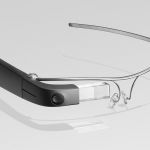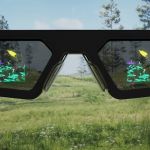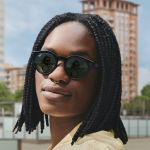
Does Facebook's Ray-Ban Stories use fashion to make technology acceptable?
In short: these aren't the VR / AR goggles we've been waiting for
September 9th, 2021
If you ask the tech prophets where the next big data processing platform will be, they'll tell you it will land on our face. As Mark Zuckerberg said with the launch of the first AR glasses produced by Luxottica and Facebook with the Ray-Ban brand: "The journey of smart glasses has begun, which will define our future." The Ray-Ban Stories presented yesterday with great fanfare do not have VR or AR functions, they allow you to take photos and videos (and then share them) through your gaze, not exactly the most reassuring thing in terms of privacy as Buzzfeed News pointed out.
The race to make successful augmented reality glasses started some time ago thanks to companies like Snapchat with Spectacles, Google Glass, Vuzix. All illustrious failures, including Google Glass being the most spectacular. However, what distinguishes Ray-Ban Stories from other products - in addition to limited functionality - is the aesthetics: the design is the exact shape of the Wayfarer model, one of the best sellers in the Luxottica galaxy. Yet just a few months ago Zuckerberg in a long interview said he wanted to transform Facebook into a metaverse company by driving innovation in both hardware and apps. The operation of the Ray-Ban Stories may seem counterintuitive, given the very limited technological features compared to its antecedents, but Facebook's goal seems to have a longer horizon: to accustom - with its familiar shape and basic functionality - the consumer to a product as invasive as tech eyewear. The failure of the previous models is in fact attributable to the fact that they had a too technological image and today very few consumers accept that a product that interferes so significantly with their image.
It is becoming an increasingly pressing priority for technology companies to offer viable alternatives to smartphones to access the internet. Few portable products can have this function and glasses are certainly the most powerful as they can bypass the physical limit of touch, with which we govern our smartphones today. The eyes are faster intuitive and connected to the brain: glasses that are not aesthetically elegant but that could revolutionize the way we live. As the designer and creative director Francois Nguyen said: "When you have two things that are similar, one is aesthetically better but the other works better, people are willing to choose the best thing". This statement is especially true with something like glasses, because being a face accessory, it can become part of your identity.
In conclusion, that of Ray-Ban Stories seems more like a sympathy operation than a revolutionary product and it is no coincidence that the trojan horse is fashion or aesthetics. After all, Apple has managed to position the AirPods on an ultra-competitive market by making them a fashion object and today it has accumulated value data on the needs and behaviors of consumers towards a product that has almost the same invasiveness as a pair of glasses. If the future is the metaverse, to get there fashion will surely be the fastest bridge to make humans accept that we will become a little more bionic.
The Ray-Ban Stories are available from today 9 September on the official Ray-Ban websites and in a selection of stores. Prices start at $ 299 for the basic versions, $ 329 for those with polarized lenses and $ 379 for photochromic ones.





























































